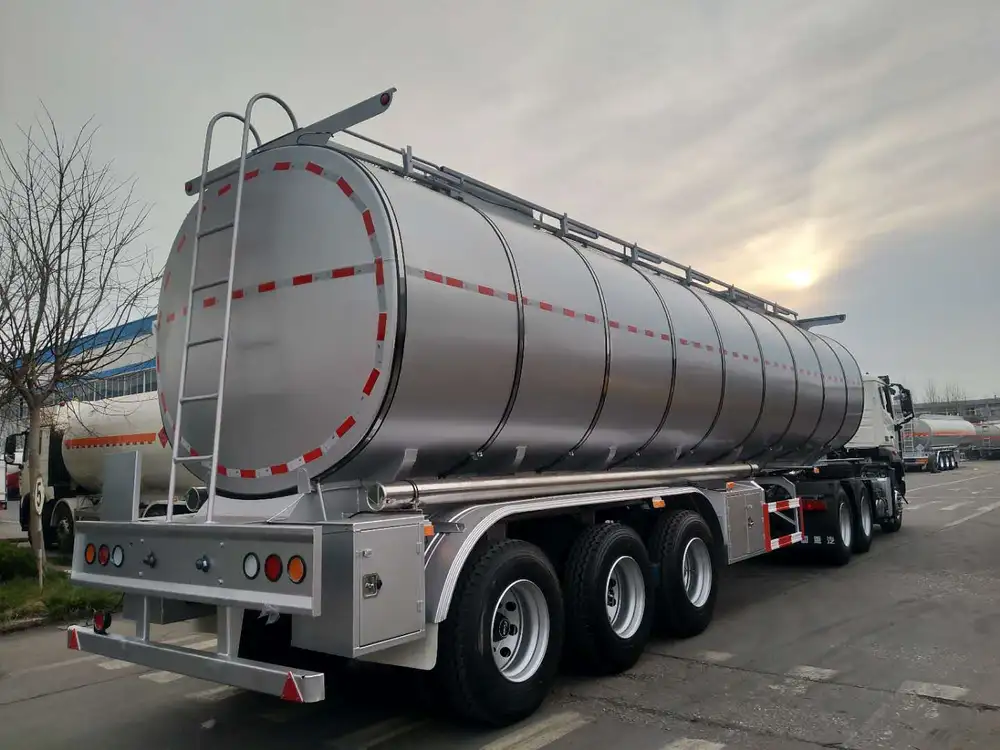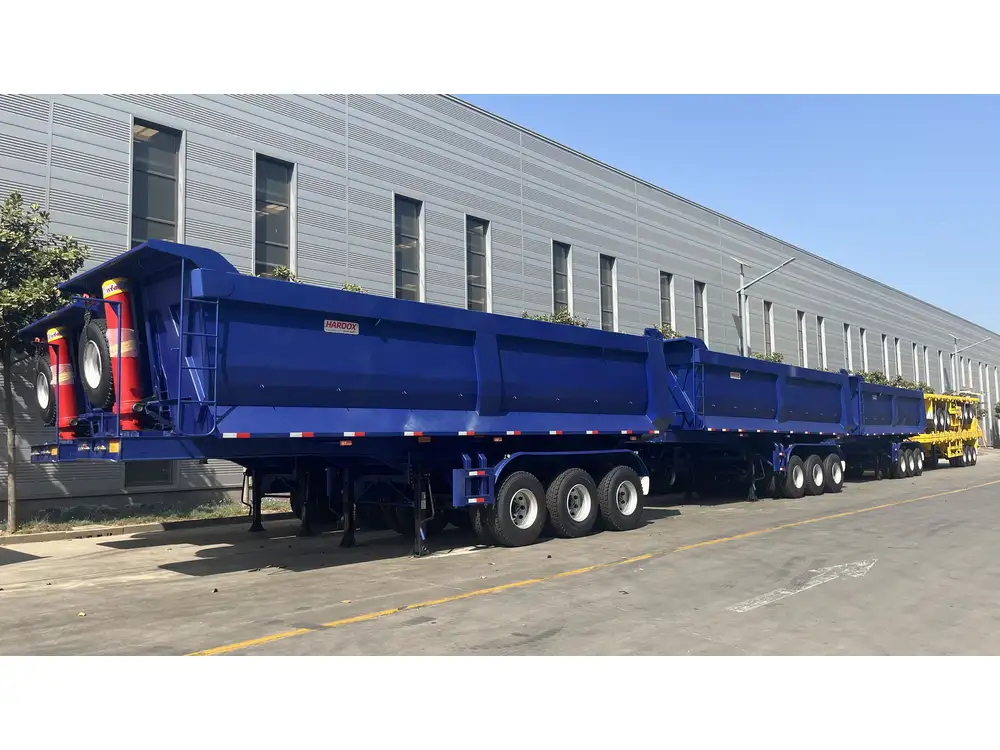Introduction to ABS in Semi-Trailers
Anti-lock Braking Systems (ABS) play a critical role in enhancing the safety and reliability of semi-trailers. The system prevents wheel lock-up during hard braking, allowing for improved stability and control, particularly in slippery conditions. However, like all mechanical systems, ABS can encounter issues that require timely intervention. Understanding how to diagnose and fix ABS problems in semi-trailers can save operators time and money while ensuring safety on the road.
Common Signs of ABS Failure
Recognizing the initial signs of ABS failure can be pivotal. Operators should watch for:
- ABS Warning Light: Typically, the ABS warning light illuminates on the dashboard. This serves as an early warning that something is amiss.
- Brake Performance Issues: Noticeable differences in braking capabilities or performance anomalies may hint at ABS complications.
- Unusual Sounds: Grinding or clicking noises during braking may indicate mechanical failures within the ABS.
- Traction Control Problems: If the traction control light is also activated alongside the ABS warning, it suggests a shared underlying fault.
Table 1 below outlines these symptoms and their potential implications:
| Symptom | Possible Cause |
|---|---|
| ABS Warning Light On | Faulty sensors or control module |
| Reduced Brake Performance | Malfunctioning solenoid valves |
| Unusual Noises | Worn or damaged ABS components |
| Traction Control Issues | Interlinked ABS and traction control faults |

Step-by-Step Guide to Troubleshooting ABS Issues
1. Preliminary Checks
Visual Inspection
Commence with a thorough visual inspection of the ABS components. Check for:
- Loose wiring or connectors: Ensure all electrical connections are secure.
- Damaged or frayed wiring: Inspect for any signs of wear that may necessitate replacement.
- Leakage from brake fluid lines: Fluid loss can impact braking efficiency.

Diagnostic Scan
Utilizing an OBD-II scanner designed for heavy-duty applications is essential. Perform a diagnostic scan to retrieve error codes that will provide deeper insights into possible failures.
2. Testing Specific Components
Sensors
ABS relies on wheel speed sensors to monitor the speed of each wheel. A malfunction in any of these sensors can trigger ABS warnings. To test:
- Detach the sensor from its mounting and clean it gently.
- Use a multimeter to check for resistance. A typical reading ranges between 1,000 to 2,000 ohms. Any discrepancies suggest replacement.

Wheel Speed Data
After confirming the sensors’ functionality, proceed to verify real-time wheel speed data. Any differences in data across the wheels can indicate sensor misalignment or hardware issues.
3. Inspecting the ABS Module
The ABS control module is responsible for managing brake pressure. A faulty module can lead to reduced braking effectiveness. Follow these steps:
- Ensure the module’s power supply is operational using a multimeter.
- Inspect for damaged pins or corrosion at the connectors.
- If issues persist, consider a replacement. Modules can be tested with specialized equipment at many service centers.
4. Assessing the Solenoid Valves
Solenoid valves regulate brake pressure within the ABS. To assess:
- Conduct a physical inspection to ensure no obstructions.
- Apply power directly to the solenoid while monitoring for operational clicking noises.
- If non-functional, replacement is necessary.

5. Brake Components Examination
Often, ABS troubleshooting leads to deeper issues originating from the brake components themselves. Check the following:
- Brake pads and rotors: Assess for wear, scoring, or uneven surfaces.
- Brake lines: Inspect for air leaks or damage that might compromise performance.
Replacing Faulty Components
If your diagnostic process has pinpointed a specific failure, it’s crucial to undertake replacements carefully. Below is a breakdown of replacement procedures for common defective components:
Sensor Replacement Procedure
- Remove the wheel: Begin by safely lifting the trailer and removing the affected wheel.
- Disconnect the sensor: Locate the offending wheel speed sensor and carefully unclip it from its bracket.
- Install the new sensor: Position the new sensor and secure it appropriately.
- Reconnect wiring and wheel: Reattach any connectors and ensure the wheel is mounted securely.

ABS Module Replacement Procedure
- Disconnect battery: Prioritize safety by disconnecting the trailer battery.
- Unbolt old module: Locate the ABS module and use appropriate tools to unfasten it from its bracket.
- Install new module: Position the new module in place and secure it to its bracket.
- Reconnect battery and test system: Ensure everything is reconnected before conducting a test to confirm the ABS warning light extinguishes.
Preventative Maintenance Tips
To ensure longevity and efficiency of the ABS on your semi-trailer, establish a routine maintenance schedule. Include:
- Regular inspections of wiring harnesses and connections.
- Cleaning and examining wheel speed sensors during routine brake maintenance.
- Regular updates and reprogramming of the ABS control module if upgrades become available.
Maintenance Schedule Suggestion
| Task | Frequency |
|---|---|
| Visual inspection of ABS system | Monthly |
| Diagnostic scan of ABS module | Bi-annually |
| Cleaning wheel speed sensors | Every 15,000 miles |
| Brake system inspection | Quarterly |

Conclusion
Understanding and addressing ABS issues in semi-trailers is not merely a matter of convenience but a necessity for ensuring safety on the roads. By meticulously following the steps laid out in this guide, operators can accurately diagnose and resolve ABS malfunctions, thus preserving the integrity of the braking system and, by extension, the safety of all road users. Remember, while troubleshooting can often mitigate issues, regular maintenance is the best prevention method in safeguarding against future complications.
With diligence and a proactive approach, the complexities of ABS troubleshooting can transform into a manageable aspect of semi-trailer operation, allowing you to maintain peak performance and safety standards on the road.



